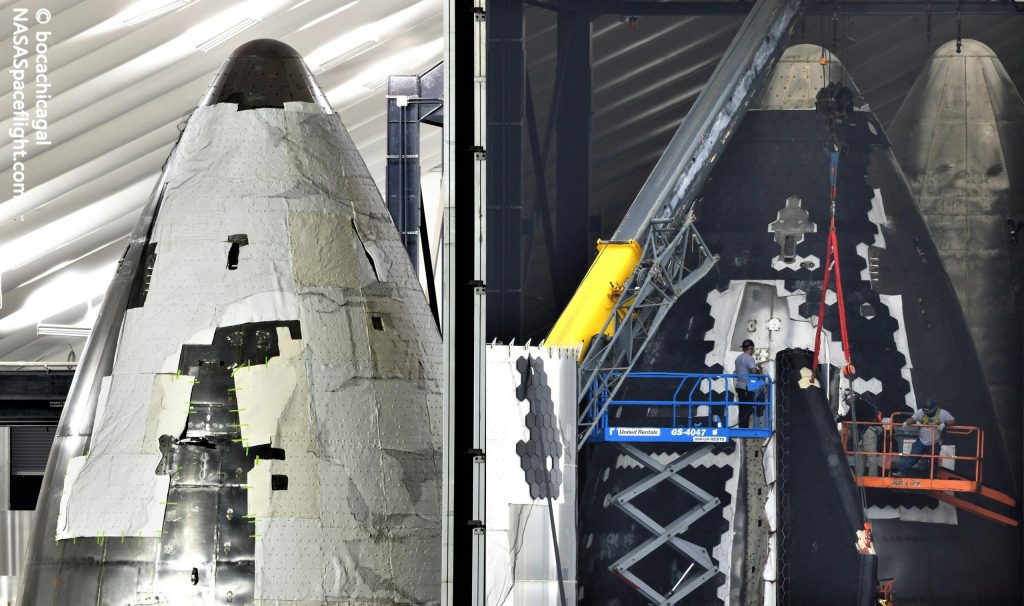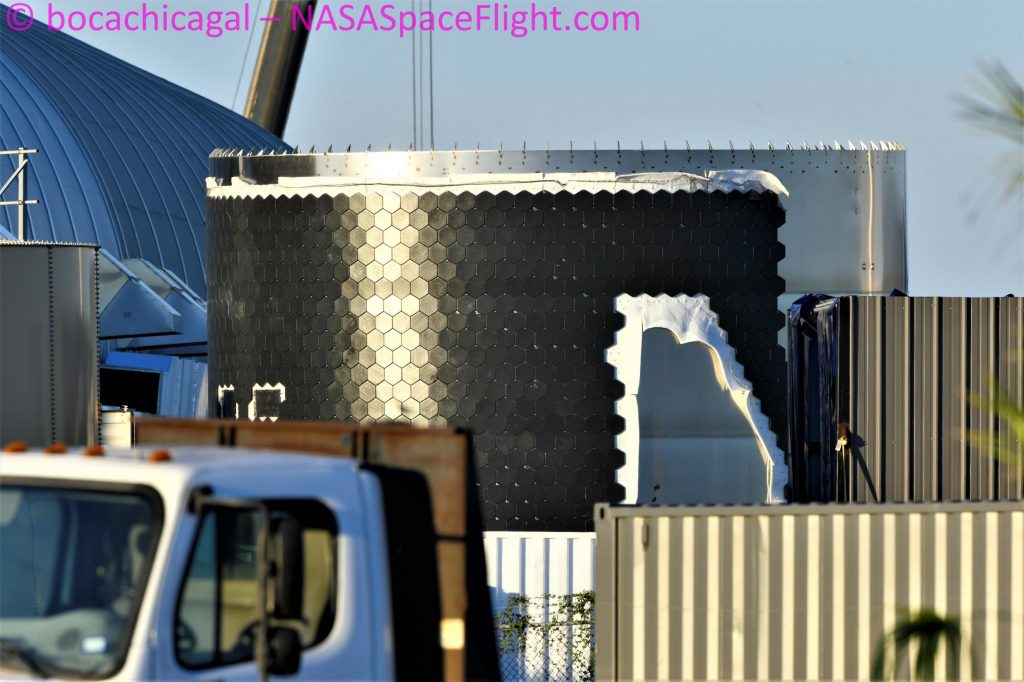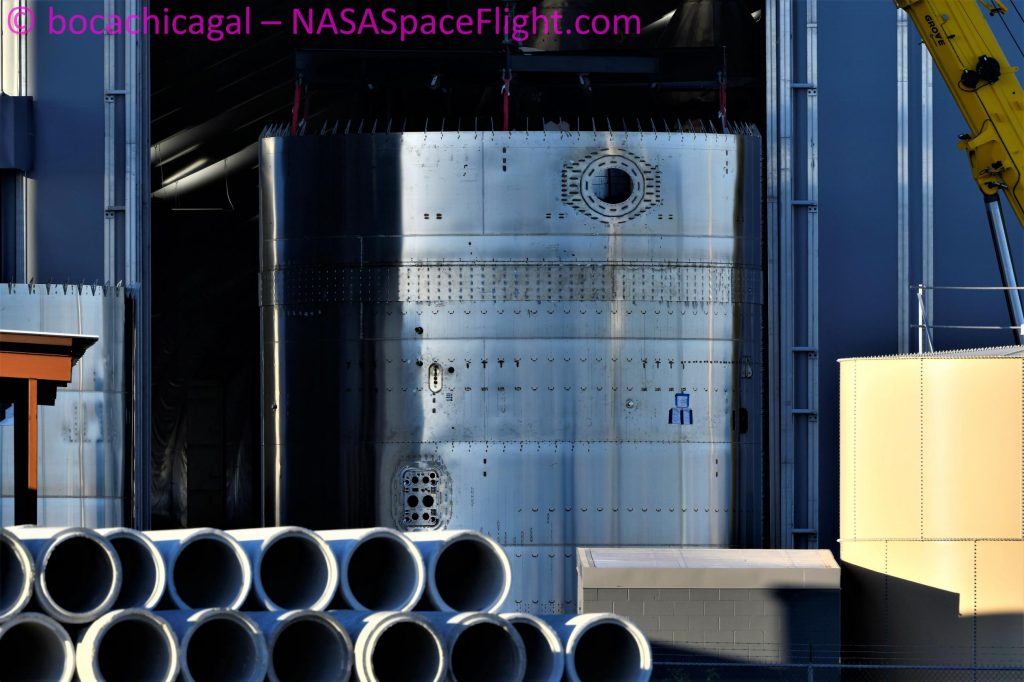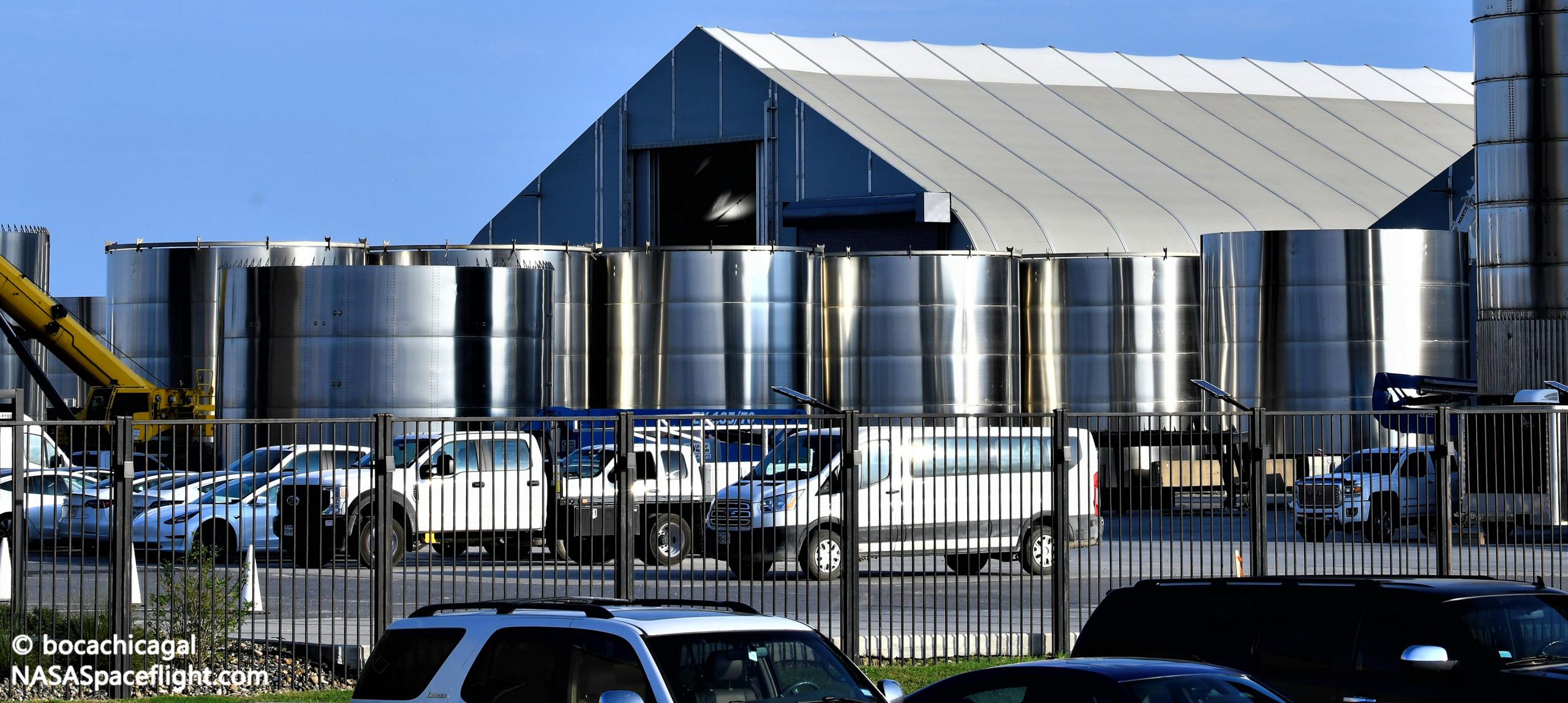As SpaceX teams slowly prepare the first orbital-class Starship and Super Heavy booster for the next-generation rocket’s first full-stack launch, the company has simultaneously begun assembling a second ship/booster pair. However, it’s clear that orbital pad construction remains a priority.
Known as Ship 20 and Booster 4, the two stages of the first orbital-class Starship first arrived at the launch site in early August. Only eight weeks later has Starship S20 finally become the first of the pair to attempt and complete one of two crucial proof tests, opening the door for one or several Raptor static fires in the coming week or two. Meanwhile, Booster 4 has had all 29 of its Raptor engines installed, uninstalled, and reinstalled and twice been placed on and removed from Starbase’s orbital launch mount in the same time frame but has yet to attempt any proof testing.
Despite the apparent delays and challenges slowing Ship 20 and Booster 4’s test debuts and two plodding FAA reviews that appear all but guaranteed to preclude an orbital launch attempt in 2021, though, SpaceX has recently begun assembling a second two-stage Starship.
Save for Starhopper back in 2019, no Starship or Super Heavy prototype has spent nearly as long at the launch site without a single test as Ship 20 and Booster 4 have. To an extent, there have likely been some technical delays while assembling, outfitting, and working with two first-of-their-kind prototypes. Still, the difference between past vehicles like Starship SN15 and Super Heavy Booster 3 are so stark that some portion of the testing delays almost has to be a conscious decision made by SpaceX.
To be able to fully proof and static fire test Super Heavy B4, SpaceX first needs to plumb, wire, and outfit Starbase’s orbital launch mount and complete a majority of the orbital pad’s massive tank farm. However, the orbital pad and its many unfinished systems are situated just a thousand (~300m) east of the suborbital launch site and Starship test facilities, which are complete and ready for testing. To test a Starship at those facilities, SpaceX has to entirely clear the pad of personnel – now several hundred people at the peak of construction – for 6-12+ hours.
The implication is that SpaceX management effectively chose to rip off the bandage now rather than later, sacrificing timely testing of Starship S20 to allow a near-total focus on orbital pad construction and activation over the last ~8 weeks. It’s hard to say if that’s paid off but the fact that SpaceX has chosen this particular moment to begin assembling the next orbital-class Starship and Super Heavy suggests that a clearer plan is starting to come together.
B4/S20, meet B5/S21
Parts of Starship S21 and Super Heavy B5 have been floating around Starbase’s build site for weeks. There was a multi-week period, for example, where the site’s massive high bay was effectively unused – clearly a conscious choice given SpaceX’s history of Starship prototype production earlier this year and late last. Parts of Super Heavy B5 were likely ready for assembly (i.e. stacking) by mid to late August. The ‘mid bay’ used for Starship tank section assembly has been similarly underutilized for even longer – only recently accepting its first Starship S21 section after supporting assembly of the orbital pad’s final storage tank.
Instead, Booster 5 stacking began around September 15th. At the current rate of assembly, which has slowed down considerably in the last week, SpaceX’s second flightworthy Super Heavy could reach its full 69m (~225 ft) height as early as mid-October. Starship S20 likely won’t be far behind. Further, thanks to SpaceX’s preferred style of continuous improvement, Booster 5 and Ship 21 production already appear well on track to outpace Booster 4 and Ship 20. With B5, rather than installing a range of external equipment (avionics, wiring, plumbing) after assembly is finished, SpaceX appears to be completing some of those subsystems during stacking, potentially speeding up final assembly by 1-2+ weeks. With S21, SpaceX has begun outfitting the Starship’s nose cone with heat shield tiles far earlier in the assembly process than it did with S20.



Given that it has taken SpaceX the better part of a month to finish and spot-fix Starship S20’s heat shield since the prototype’s second trip to the test site, taking those lessons learned to heart and getting Starship S21’s heat shield installation right on the first try could cut weeks from final assembly.
In the meantime, after completing Ship 20’s first cryoproof test on September 29th, SpaceX will hopefully be able to kick off the first six-engine Raptor static fire test campaign within the next week or so. With any luck, the start of B5/S21 assembly also means that the orbital launch pad is nearly ready to support Super Heavy B4’s first proof tests, even if static fires with anything close to a full set of 29 Raptors appear to be weeks away. Regardless, it looks like it won’t be long before SpaceX will be juggling two pairs of orbital-class Starships and Super Heavy boosters.











